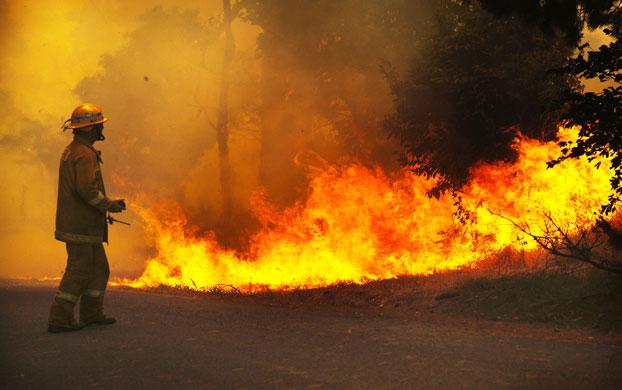Inferno on Earth: Wildfires spreading as temperatures rise
“Future firefighters have their work cut out for them.,” says Janet Larsen, Director of Research for the Earth Policy Institute, in a recent release, “Inferno on Earth: Wildfires Spreading as Temperatures Rise“. Perhaps nowhere does this hit home harder than in Australia, where in early 2009 a persistent drought, high winds, and record high temperatures set the stage for the worst wildfire in the country’s history.” On 9 February 2009, now known as “Black Saturday,” the mercury in Melbourne topped 115 degrees Fahrenheit (46.4 degrees Celsius) as fires burned over 1 million acres in the state of Victoria—destroying more than 2,000 homes and killing more than 170 people, tens of thousands of cattle and sheep, and 1 million native animals. Even as more people move into fire-prone wildlands around the world, the intense droughts and higher temperatures that come with global warming are likely to make fires more frequent and severe in many areas. (See table of regional observations and predictions) For southeastern Australia, home to much of the country’s population, climate change could triple the number of extreme fire risk days by 2050. …
